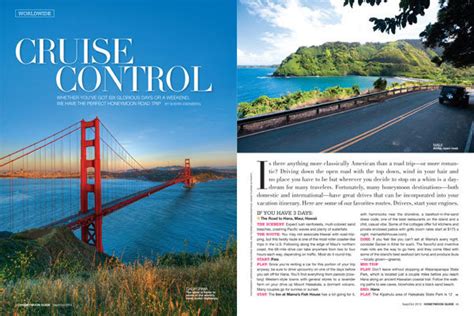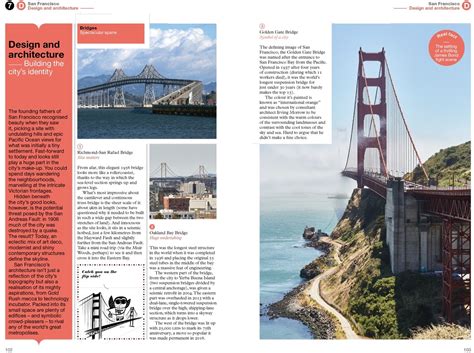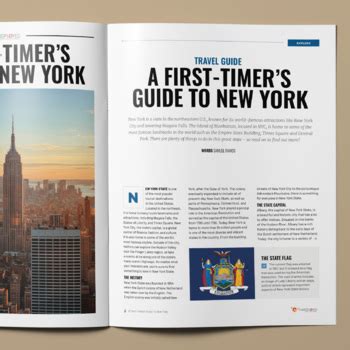Planning a trip around the Bay Area? The Bay Area Rapid Transit (BART) system is your go-to option for fast, reliable transportation across key destinations. With extensive coverage, multiple stations, and an efficient schedule, BART makes navigating the Bay Area easier than ever. Whether you’re a local commuter or a first-time visitor, our Ultimate BART Travel Planner Guide will help you plan your journey with ease. From understanding routes and fares to exploring must-see attractions, this guide covers everything you need to know for a smooth, hassle-free ride on BART. Get ready to navigate the Bay Area like a pro!
Join elolok.net for a detailed examination of this topic.
1. Overview of BART System: Coverage, Stations, and Routes
The Bay Area Rapid Transit (BART) system is the cornerstone of public transportation in the San Francisco Bay Area. Serving five counties—San Francisco, Alameda, Contra Costa, San Mateo, and Santa Clara—it connects major cities such as San Francisco, Oakland, and Berkeley, and extends beyond. BART’s network encompasses over 131 miles, with 50 stations strategically positioned to offer convenient access to crucial destinations, including airports, business centers, and popular tourist attractions.
The system relies on six distinct routes, each color-coded for easy identification: Yellow, Blue, Green, Orange, Red, and Purple. These routes traverse specific areas within the Bay Area, providing seamless connections between residential neighborhoods, urban centers, and popular destinations. BART trains offer frequent service during peak hours and maintain reliable operations during off-peak times, ensuring commuters have a variety of travel options.
For travelers exploring the Bay Area, BART offers a convenient and affordable transportation solution. Whether your destination is downtown San Francisco, Oakland International Airport, or points east like Pleasanton and Pittsburg, BART provides efficient service. Seamlessly connecting with other regional transit systems, including buses and ferries, BART serves as a crucial component of the Bay Area’s public transportation network. This comprehensive system ensures a user-friendly experience for both residents and tourists.

2. How to Plan Your BART Trip: Tools and Resources
Navigating BART is a breeze with the helpful tools and resources available. BART’s official website provides a comprehensive trip planner, enabling you to input your starting point and destination to discover the most efficient route, schedule, and fare information. Additionally, you can access real-time train departure times, service advisories, and station details directly on the website.
For commuters on the move, BART offers a convenient mobile app that provides the same features as their website, keeping you informed with real-time updates. You can also plan your trip using popular transit apps like Google Maps, Transit, and Moovit, all of which integrate BART routes alongside other transportation options.
Printed maps and schedules are available at BART stations, providing a tangible guide for your journey. These resources, coupled with clear station signage and announcements, make it easy for both first-time and frequent riders to plan and enjoy their trip on BART.

3. Navigating the BART Schedule: Peak Times and Off-Peak Tips
BART follows a predictable schedule, with peak passenger volume occurring during weekday mornings (5:00 AM to 9:00 AM) and evenings (3:00 PM to 7:00 PM) as commuters travel to and from work. To handle the increased ridership, trains run more frequently during these peak hours. If you are traveling during these times, plan for potential delays as stations and trains will be busier.
Traveling during off-peak hours, which encompass midday, late evenings, and weekends, provides a more tranquil journey. With fewer passengers and less crowded trains, you’ll enjoy ample seating and space. While train frequency may be reduced during these times, BART’s schedule is readily available online and at station displays. Real-time updates are also accessible through the mobile app and website. By understanding peak and off-peak periods, you can enhance your travel experience, whether you’re a regular commuter or a leisurely explorer of the Bay Area.

4. Fares and Passes: Understanding BART Pricing and Payment Options
BART’s fare system is based on distance traveled, with prices increasing as the journey lengthens. The cost of your trip is determined by your starting and ending stations, and fares are readily available on BART’s website, mobile app, and station ticket machines. It’s crucial to note that BART does not offer a flat fare, so it’s essential to confirm the price of your trip in advance.
You can pay for your BART trip with a Clipper card, a reloadable smart card accepted by multiple Bay Area transit systems. Load funds onto your Clipper card online, through the mobile app, or at station kiosks. For infrequent riders or tourists, BART also offers paper tickets, which have a surcharge.
Frequent travelers can benefit from monthly passes or value-added Clipper cards, which offer a convenient way to save money on multiple trips. Discounts are available for seniors, people with disabilities, and youth. Furthermore, children under 5 years of age ride for free.
When parking at BART stations, you have two payment options: using the official BART app or obtaining a parking permit. Familiarizing yourself with these fare and payment options will make your journey on the BART system more seamless.
5. BART Mobile Apps and Online Planners: Best Tools for Seamless Travel
BART makes planning your trip easier with a variety of mobile apps and online tools. The official BART app is an excellent resource, offering real-time train arrival information, route planners, fare calculators, and service updates. With the app, you can seamlessly plan your entire journey, from checking schedules and tracking delays to even paying for parking at BART stations.
If you prefer a comprehensive planning tool, Google Maps incorporates BART routes, enabling you to seamlessly integrate BART with other transit options like buses or walking routes. Alternatively, third-party apps such as Transit and Moovit also offer BART schedules, real-time updates, and advanced navigation features.
The BART website is a valuable resource, featuring a comprehensive trip planner that helps you calculate fares, plan your route, and stay informed about service updates. Whether you utilize the official app or a third-party planner, these tools guarantee a seamless and stress-free BART travel experience.
6. Accessibility and Facilities: Ensuring a Comfortable Ride
BART prioritizes accessibility and comfort for all riders, especially those with disabilities. Most BART stations are equipped with elevators and escalators to facilitate easy access for passengers with mobility challenges. Furthermore, trains feature designated wheelchair spaces, ensuring convenience for individuals requiring additional room.
BART stations are designed to be accessible, featuring restrooms and seating areas for everyone. Most platforms are level with train doors, making boarding easy and smooth. To assist visually impaired passengers, tactile pathways and audible announcements guide them throughout the system.
If you require extra help during your journey, BART provides resources like the Easy Access Travel Guide. This guide offers detailed information about station layouts, accessibility features, and helpful tips to make your trip smoother. You can also reach out to station agents for assistance at any BART stop.
BART is committed to providing a comfortable and inclusive travel experience for all passengers. This makes it an accessible option for both daily commuters and those exploring the Bay Area.
7. Safety Tips and Guidelines for BART Travelers
Your safety is our top priority on BART. To ensure a smooth and enjoyable journey, please follow these guidelines:
* Stay behind the yellow line on the platform: This helps maintain a safe distance from the train tracks.
* Wait for the train to come to a complete stop: This allows for a safe and efficient boarding process.
* Allow passengers to exit before entering: This ensures a courteous and orderly flow of passengers.
Safeguard your belongings and keep them close at hand, especially in crowded environments. Refrain from flaunting valuable items like electronics or jewelry, as this may draw unwanted attention. When traveling late at night, opt for well-lit areas within the station and choose busy, populated trains.
BART staff are available at stations and on trains to help riders and ensure their safety. Should you observe any suspicious activity or feel uneasy, please don’t hesitate to speak with a BART police officer or report it through the emergency intercom, which is accessible throughout the system.
Moreover, take the time to review the emergency procedures posted throughout the train and on platforms. Familiarity with emergency exit locations and communication protocols can greatly enhance your safety. By adhering to these tips and guidelines, you can ensure a secure and enjoyable BART experience.
8. Exploring Popular Destinations via BART: Key Attractions and Stops
BART offers convenient access to numerous popular destinations throughout the Bay Area, making it a top choice for both visitors and residents. A prime attraction easily reached by BART is San Francisco’s Embarcadero, accessible via the Embarcadero Station. This vibrant waterfront destination features the renowned Ferry Building Marketplace, a treasure trove of gourmet food, artisanal goods, and breathtaking views of the Bay Bridge.
For a cultural immersion, head to the Oakland Museum of California, easily accessible from the Lake Merritt Station. This museum showcases California’s rich history, art, and culture, making it a must-visit for art lovers and history enthusiasts. Sports fans will find their way to Oracle Park, home to the San Francisco Giants, a short trip from the Montgomery Street Station.
The University of California, Berkeley, is easily accessible from the Ashby Station, a short ride away. From there, you can explore the stunning campus grounds and diverse cultural events. The BART system also seamlessly connects to other regional transit options, allowing you to effortlessly venture further afield. Visit breathtaking Muir Woods or indulge in the renowned wineries of Napa Valley, all within reach via BART. With numerous stops connecting you to key attractions, BART is your key to unlocking the Bay Area’s best experiences.
9. Insider Tips for First-Time BART Riders: What to Know Before You Go
New to BART? A few insider tips can make your first ride a breeze. Start by downloading the official BART app or checking their website. Familiarize yourself with the routes, schedules, and fares. This will help you plan your trip in advance and avoid any unexpected delays.
Upon arriving at the station, locate the electronic signs that display real-time train arrival information. This will help you determine whether to wait for the next train or explore nearby areas while you wait. Additionally, it is advisable to arrive a few minutes early to accommodate potential delays.
Unsure of your fare? No problem! Ticket vending machines, conveniently located at stations, can help you easily calculate your fare based on your chosen route. Don’t forget to keep your ticket or Clipper card close by, as you’ll need it to exit the system.
If you have any questions or concerns, please don’t hesitate to ask BART personnel for assistance. They are there to help! Remember to keep your belongings secure and be aware of your surroundings, especially during peak hours. By following these tips, you can confidently navigate the BART system and enjoy your exploration of the Bay Area.
Navigating the BART system can greatly enhance your travel experience in the Bay Area. With its extensive coverage, accessible facilities, and a range of tools and resources, BART makes commuting straightforward and convenient. By planning ahead and utilizing the tips provided, you’ll be well-equipped to explore popular destinations and enjoy a seamless journey. Whether you’re a first-time rider or a seasoned commuter, BART is a valuable travel companion.
elolok.net